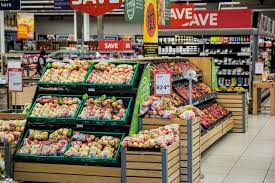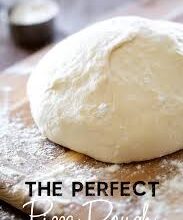Essential Baking Methods Everyone Should Know

The flavour and aroma of the meal are enhanced by baking. It also can increase the number of ways that food may be made healthy. People are shifting away from deep-fried foods and toward baked goods.
However, it might be an intimidating task if you’ve never baked before. Start preparing bread, pastries, and sweets with these fundamental baking skills in Traditional Baking Class Melbourne.
Measuring Techniques
For the most significant outcomes, various substances necessitate different measurement approaches. Check your recipe’s instructions to see if it says which method to use.
Scoop and level method
We recommend utilizing the scoop and level technique if your recipe doesn’t specify which measurement method. It isn’t the most accurate, but it is the most widely used.
To use this approach, scoop the flour into the measuring cup and level it off with the back of a knife. Unless the recipe specifies otherwise, we utilize this approach in many of our dishes. This method may measure sugar, flour, baking soda, baking powder, and salt in a Traditional Baking Class Melbourne.
Spoon and level method
If you neglect a recipe’s directions for measuring flour and other ingredients using a spoon and level, you may wind up with 50 percent more flour or additional components than you need. Flour, cocoa, or confectioner’s sugar can all be utilized in this approach.
Scoop and pack method
Brown sugar is measured by scooping and pressing it down in a measuring cup. Light and dark brown sugar can be used interchangeably unless a recipe specifies otherwise. This method is taught in a Traditional Baking Class Melbourne.
Mixing Techniques
Here are some mixing techniques you need to know.
Quick bread mixing
Many quick-bread recipes and the rare cookie recipe do not necessitate the use of a particular mixing process. You combine all ingredients in one bowl and stir entirely before placing it in the oven.
Although this is the simplest baking method, it is not used in most cookies, cakes, or bread. The creaming process is required in most baking recipes in a Traditional Baking Class Melbourne.
The creaming method
Many recipes call for creaming the fat and sugar together first. The creaming procedure is what it’s called. The most common sequence of actions is to thoroughly combine the sugar and butter or shortening in a mixer, then add the other liquid components, such as eggs and vanilla or other extracts.
After they’ve been correctly blended, properly creamed components will be light and fluffy and lighter in colour. This is done using the paddle attachment of an electric stand mixer.
You want your butter to be room temperature or the consistency of shortening when creaming it. Your butter will not whip properly if it is too soft, resulting in flatter baked items.
Dry ingredients are usually combined in a separate bowl before being added to the main bowl once all of the liquid components have been included in the creaming procedure.
Rub in the flour method
The texture of your baked items will be ideal if you mix the flour with the butter first by pushing the butter into the flour over and again.
Continue rubbing and rubbing until the mixture resembles crumbs. Every grain of flour will be brushed with butter, which will melt throughout the baking process, resulting in a uniformly wet crumb. If you don’t ought to use your hands, you may use a pastry blender for this stage.
Blind baking method
The term blind baking simply refers to the process of pre-baking. Before adding the filling, this procedure pre-cook the pastry dough. In some pie recipes, it prevents an undercooked crust.
If the filling is liquid, using a pre-baked crust prevents sure pies from becoming soggy while baking.
It’s also worth noting that you’ll need to pre-bake the crust for ten or fifteen minutes before adding the filling if you’re using clay. Depending on the filling, you may need to let the crust cool before adding the filling. These directions should be included in the recipe.
5 Different Types of Baking
Here are the five different types of baking that are essential for you to know.
Oven baking
The most popular type of baking uses an oven to trap heat in an enclosed room where the dough or batter is baked.
Steam baking
To prepare baked products like crumpets and cakes, steaming traps heat with a little water in a tight-fitting cover and pan.
Hot stone baking
A baking process in which a hot stone spreads high heat across the bread uniformly and other baked items.
Hot ash baking
Flatbreads and cakes are generally baked over a bed of burning ash in this primitive method.
Grill baking
To infuse baked items with a bit of smoky or charred flavour, employ a hybrid style of cooking that starts on the grill and finishes in the oven—or vice versa.
Author’s Bio: Leila Brent, A freelance writer in Melbourne Leila is a new mother who has a strong passion for writing. Writing has allowed Leila to be with her newborn, but also to communicate her passion for writing everyday.
She specialises in retail based copy, and has plenty of experience communicating how good products are to the right buyers. For more of her Blogs visit Castle Jackson.



